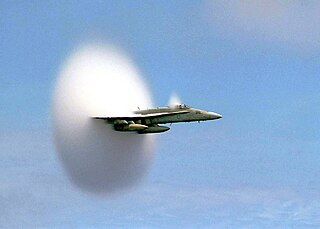 W
WAn aircraft is a vehicle that is able to fly by gaining support from the air. It counters the force of gravity by using either static lift or by using the dynamic lift of an airfoil, or in a few cases the downward thrust from jet engines. Common examples of aircraft include airplanes, helicopters, airships, gliders, paramotors and hot air balloons.
 W
WAn airborne wind turbine is a design concept for a wind turbine with a rotor supported in the air without a tower, thus benefiting from the higher velocity and persistence of wind at high altitudes, while avoiding the expense of tower construction, or the need for slip rings or yaw mechanism. An electrical generator may be on the ground or airborne. Challenges include safely suspending and maintaining turbines hundreds of meters off the ground in high winds and storms, transferring the harvested and/or generated power back to earth, and interference with aviation.
 W
WThe aircraft design process is a loosely defined method used to balance many competing and demanding requirements to produce an aircraft that is strong, lightweight, economical and can carry an adequate payload while being sufficiently reliable to safely fly for the design life of the aircraft. Similar to, but more exacting than, the usual engineering design process, the technique is highly iterative, involving high level configuration tradeoffs, a mixture of analysis and testing and the detailed examination of the adequacy of every part of the structure. For some types of aircraft, the design process is regulated by national airworthiness authorities.
 W
WA barn find is a classic car, aircraft or motorcycle that has been rediscovered after being stored, often in derelict condition. The term comes from their tendency to be found in places such as barns, sheds, carports and outbuildings where they have been stored for many years. The term usually applies to vehicles that are rare and valuable, and which are consequently of great interest to collectors and enthusiasts despite their poor condition.
 W
WA flame damper, also known as a flame suppressor, is a device attached to the exhaust manifold of an aircraft engine that mixes air with the still-incandescent exhaust to ensure it is completely cooled, and thus no longer visible, before it exits the damper. Dampers were standard equipment on night bombers and night fighters during World War II. Because they entrained air, they had a negative effect on performance and were often removed by ground fitters when the aircraft was being used during the day. A similar device used on firearms is known as a flash suppressor.
 W
WThe fuel economy in aircraft is the measure of the transport energy efficiency of aircraft. Efficiency is increased with better aerodynamics and by reducing weight, and with improved engine BSFC and propulsive efficiency or TSFC. Endurance and range can be maximized with the optimum airspeed, and economy is better at higher altitudes. An airline efficiency depends on its fleet fuel burn, seating density, air cargo and passenger load factor, while operational procedures like maintenance and routing can save fuel.
 W
WA ground track or ground trace is the path on the surface of a planet directly below an aircraft's or satellite's trajectory. In the case of satellites, it is also known as a suborbital track, and is the vertical projection of the satellite's orbit onto the surface of the Earth.
 W
WThe Illustrated Encyclopedia of Aircraft was a weekly partwork magazine by Aerospace Publishing that was published in the United Kingdom in the early 1980s. The magazine was intended to eventually make up a multi-volume encyclopedia dedicated to aviation. First issued in 1981, the partwork comprised 216 parts, each of 20 pages, making up 18 volumes. The first two issues were sold together for the price of one, subsequent issues were sold on their own.
 W
WLarge aircraft allow the transportation of large and/or heavy payloads over long distances. Making an aircraft design larger can also improve the overall fuel efficiency and man-hours for transporting a given load, while a greater space is available for transporting lightweight cargoes or giving passengers room to move around. However, as aircraft increase in size they pose significant design issues not present in smaller types. These include structural efficiency, flight control response and sufficient power in a reliable and cost-effective installation.
 W
WA mother ship, mothership or mother-ship is a large vehicle that leads, serves, or carries other smaller vehicles. A mother ship may be a maritime ship, aircraft, or spacecraft.
 W
WTransonic flow is air flowing around an object at a speed that generates regions of both subsonic and supersonic airflow around that object. The exact range of speeds depends on the object's critical Mach number, but transonic flow is seen at flight speeds close to the speed of sound, typically between Mach 0.8 and 1.2.